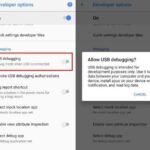We’ll show you how to use the Fastboot method to unlock the bootloader on any Android device in this guide. While the final stages are the same for all devices, the path followed to get there differs slightly. Your OEM may have added a few extra restrictions to the unlocking process. If that’s the case, you’ll need to go over the prerequisites before moving on to the next stage. Here’s everything you need to know about the subject.
Of all the fundamental advantages that the Android ecosystem has to offer, its open-source nature is without a question at the top. Users are often spoilt for choice after opening the doors to a plethora of customization options. A simple visit to the Play Store may be sufficient for the majority of consumers’ needs. They might install custom launchers, themes, icon packs, wallpapers, and ringtones, for example. They could even sideload their favorite apps onto their devices if that wasn’t enough. All of this, however, is simply the tip of the iceberg.
The actual potential of their device is usually unlocked by tech enthusiasts. They might install a fresh custom ROM that is completely different from the stock OS on their smartphone. Then there’s the option to swap out the standard recovery for a custom recovery like TWRP, which allows you to install a variety of mods, frameworks, ZIP, IMG, and other changes. If you want to take it a step further, rooting your device will grant you administrator access and allow you to make changes to the system partition.
These are just a few of the customizability options available; there are many more. However, there is a crucial criterion that must be met for each of the mentioned adjustments. Your device’s bootloader should be unlocked as a result of this. So, if you’re ready to give these adjustments a shot, here’s how to use the fastboot method to unlock the bootloader on any Android smartphone. Keep up with us.
What is a Bootloader
The first thing that may spring to mind is what precisely is an Android bootloader. “A bootloader is a vendor-proprietary image responsible for bringing up the kernel on a device,” according to Google. This is far too much to take in. In plain terms, a bootloader is a software program that determines which programs should be loaded when your device starts up.
It also makes it easier for the device to enter bootloader mode. Similarly, every Android device has a few partitions, including boot, recovery, system, data, and vendors. The Bootloader is a protection mechanism for these partitions, ensuring that their integrity is preserved and that no alterations are made to them.
What is an Unlocked Bootloader
The bootloader acts as a guardian for all device partitions, ensuring that no changes are made to any of them. It must ensure that you are running the original software program that came with the device. But here’s the thing: there’s a catch. This default operating system does not appeal to everyone. There could be numerous reasons for this. For example, they may dislike the user interface, be opposed to in-app advertising, or be annoyed by the numerous bloatware programs that come pre-installed.
The causes could be numerous, but there is only one treatment: unlocking the bootloader on your Android device. As soon as you do so, the system will remove any limitations on the level of personalization you can obtain. You could get a bootloader unlocking warning message at boot time, but that’s it. There would be no restrictions on taking advantage of the advantages that an unlocked bootloader provides. But, first and foremost, what are these advantages? Let’s have a look.
Advantages of an Unlocked Bootloader
Once your Android device’s bootloader is unlocked, you can install a custom recovery like TWRP. This will allow you to apply mods, wipe multiple device partitions, backup Nandroid, and install files via ADB, among other things. You may also install many popular custom ROMs such as LineageOS, HavocOS, and Pixel Experience if the device bootloader is unlocked. Not only will this give your cellphone a new design, but it may also upgrade the Android version, even if the device is no longer planned for an upgrade.
Similarly, Magisk can provide you with simple access to system-level files and allow you to alter them as needed. This is known as rooting the device in simpler terms. We could go on and on about the advantages, but the truth is that there is another side to it. The unlocking of the bootloader on an Android device comes with a number of concerns. So, before you go any further with the processes, be sure to look over the risk factor, which is listed below.
Risks with Unlocked Bootloader
Unlocking the bootloader comes with a number of drawbacks. For starters, your gadget is now more vulnerable to threats. Furthermore, your OEM may void and nullify the device’s warranty. Similarly, some banking apps, such as Google Pay, and games, such as Pokemon GO, may not work properly. Similarly, you will be downgrading your Widevine Certification from L1 to L3, which will prevent you from watching Netflix in HD. The technique is risky in and of itself, and if done incorrectly, it could damage your device or cause it to bootloop.
So now you’re aware of all the benefits and drawbacks. If you’re ready to go, follow the steps below to use the fastboot method to unlock the bootloader on any Android smartphone.
How to Unlock Bootloader via Fastboot Method on Android
Before we start unlocking the bootloader, let’s take a closer look at what a bootloader is and what benefits or drawbacks you’ll gain after it’s unlocked;
Warning
Before we start unlocking the bootloader, I strongly advise you to make a backup of your device’s storage and all of the files stored on it. The data on your smartphone will be erased if the bootloader is unlocked. Furthermore, to avoid permanent damage or bricking of your device, it is recommended that you carefully follow the methods outlined in this article. If something goes wrong, neither the author nor GetDroidTips are responsible.
We’ve broken down the unlocking procedure into simple phases to make it easier to grasp. Follow along.
Step 1: Backup your Device
To begin, make a full backup of your Android device. This is due to the fact that the procedure will erase all of the data on your device. You can consult our detailed guide on the subject.
Step 2: Enable USB Debugging and OEM Unlocking
After that, you’ll need to activate OEM unlocking and USB Debugging. The former is necessary to start the procedure. The latter will aid in the effective establishment of an ADB connection between your device and your computer. The option to enable both of them can be found within Developer Option, which is itself concealed. Here’s how to make them both work.
1. On your Android device, go to the Settings menu.
2. Tap Build Number 7 times in About Phone.
3. Return to the Settings menu and select System, then Advanced.
4. Now you should be able to see the Developer Options menu. Toggle on USB Debugging and OEM Unlocking.
STEP 3: Install Android SDK Platform Tools
On your PC, you’ll also need to install the ADB and Fastboot binaries. This is required for ADB and Fastboot commands to be executed between your PC and your Android device. So go ahead and download the Android SDK Platform Tools on your computer.
STEP 4: OEM Specific Prerequisites
Whereas the unlocking process on Pixel Nexus and Android One smartphones is quite simple, some OEMs, such as HTC, Nokia, Motorola, and HTC, among others, require an unlock key, particular codes, or even a specific file. Before you begin the fastboot technique of unlocking, you must first meet these conditions. You could use the links below to get help, then follow the guidelines and move on to the next step.
Device-Specific Requirements: Motorola | HTC | Sony | Nokia
STEP 5: Boot Device to Fastboot/Bootloader Mode
1. You must now boot into Fastboot/Bootloader mode on your device. To do so, follow the instructions below:
2. Connect your device to your PC via a USB cord if USB Debugging and OEM Unlocking are enabled.
3. Go to the platform-tools folder and type CMD into the search box. The Command Prompt will open as a result of this.
4. To ensure that the device has been successfully linked to the ADB mode, run the following command in the CMD window:
adb devices
5. Your device will request you to Authorize USB Debugging as soon as you do so. Select OK. If you’re performing these steps on your own computer, you can also select the Always allow from this computer option.
6. To boot your device into Fastboot or Bootloader Mode, type the following command:
adb reboot bootloader
7. Now follow the steps below to finally unlock your Android device’s bootloader using the fastboot technique.
STEP 6: Unlock Bootloader
1. Now comes the most crucial portion. If you have a Google Nexus, Pixel, or any other OEM device released in 2015 or later, use the fastboot command below to unlock the bootloader. Keep in mind that the command below will delete all data.
fastboot flashing unlock
2. If your device was released before 2015, however, the following command will be useful: fastboot oem unlock
3. A confirmation notification should appear on your device at this moment. Select Unlock the Bootloader with the Volume keys, then confirm your choice with the Power button.
4. The procedure will now only take a few seconds. The device will then boot to the bootloader or OS. If it boots to the operating system, that’s great; if not, use the code below.
fastboot reboot
5. That’s it. These were the steps needed to use the fastboot technique to unlock the bootloader on your Android device.
Concluding Remarks
It’s important to remember that the first boot will take some time; this is quite normal. Another point worth noticing is that your device may still use the older fastboot oem unlock command even though it was released after 2015. If the fastboot flashing unlock command fails, you should attempt the first option.
You’ll also get the Unlocked Bootloader warning message after each boot, which is nothing to be concerned about. Because your device has been cleaned, you will need to check in with your Google account when it boots up. On that topic, please let us know if you have any questions in the comments section below. Finally, here are some iPhone Tips and Tricks, PC tips and tricks, and Android Tips and Trick you should look into.




